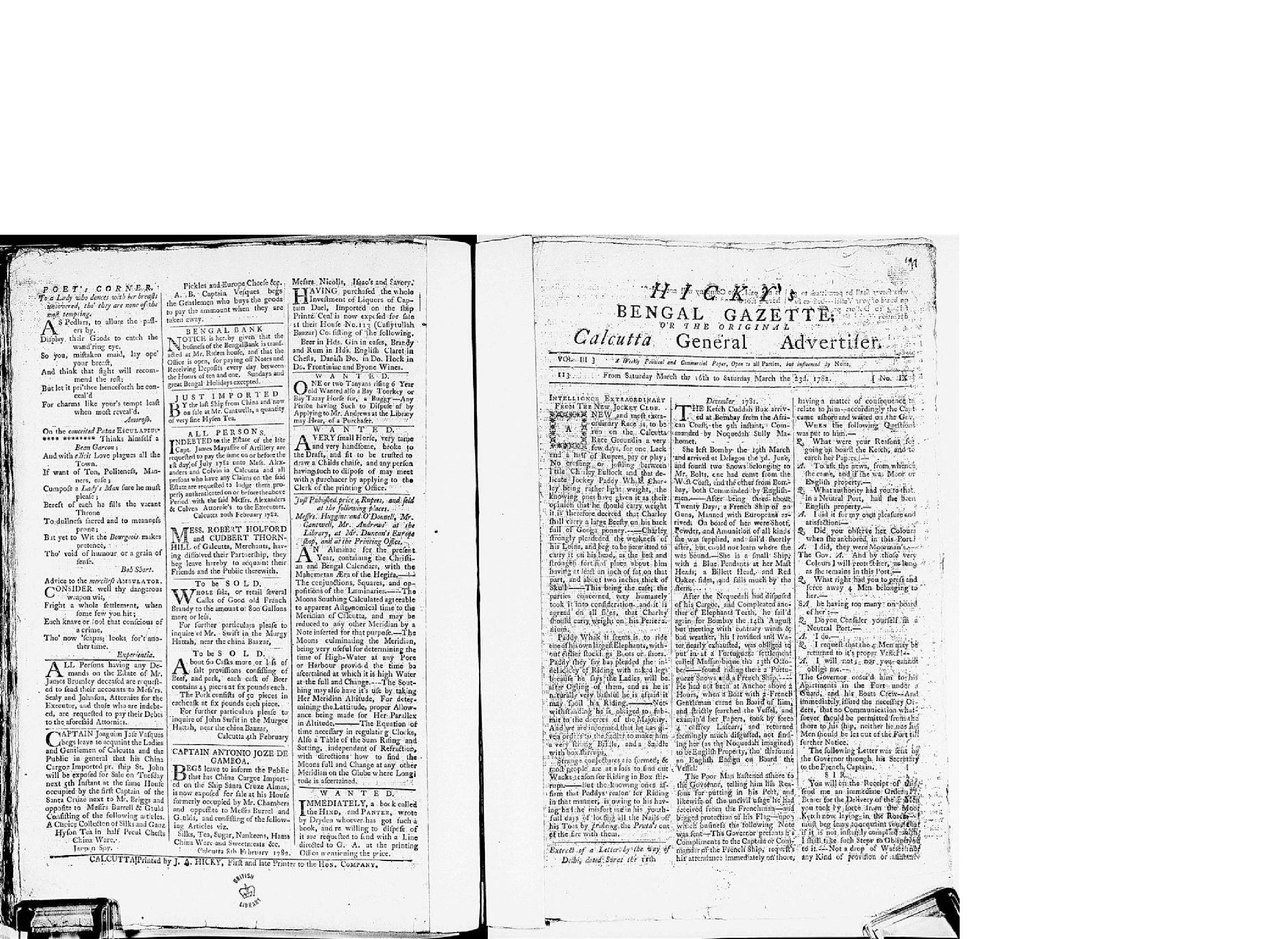During the rule of the British East India Company, the Anglo-Indians and Europeans began to publish newspapers and journals.
Hicky began to publish a weekly by name The Bengal Gazette in 1780 and did not hesitate to criticize the actions of the then Governor General Warren Hastings.
Hicky is justifiably considered as the pioneer in the history of journalism in India. During the regimes of Cornwallis and Wellesley, the editor of Indian World, Duanna and Charles Maclean, the editor of The Bengal Gazette also attacked the policies and were deported to England.

Image Source: upload.wikimedia.org/wikipedia/commons/thumb/1/13/Hicky%27s_Bengal_Gazette.pdf/page1-1280px-Hicky%27s_Bengal_Gazette.pdf.jpg
ADVERTISEMENTS:
In 1818, J.S. Buckingham started the Calcutta Journal and also attacked the policies of the British officials and he too was deported to England. The British introduced the licensing system to publish papers. During 1860, The Bengalee and The Amrita Bazar Patrika were started in ‘Bengalee language’.
Lord Lytton wanted to control and regulate the vernacular press by his Vernacular Press Act of 1878. The press and literature played a very important role in moulding and shaping the national consciousness of the Indians.
In particular, the role of the newspapers The Indian Mirror, The Bombay Samachar, and The Hindu Patriot, The Amrita Bazar Patrika, The Hindu, The Kesari, The Bengalee, The Huriara. The Bengali Public Opinion, The Reis and Rayet, The Samprokash, The Sulabh Samachar, The Hitavadi, The Induprakash, The Swadeshimitran, The Advocate of Lucknow, The Herald of Bihar are really noteworthy. By 1875, there was phenomenal growth of newspapers in India which rose to 475 in number. These newspapers created awareness among the masses of India about the need to be united and to act with one voice to achieve their goal of freedom from foreign yoke.
Bipan Chandra observes that in the period from 1870 to 1918, powerful newspapers emerged under distinguished and fearless nationalists. The influence of the press extended far beyond its literate subscribers. Their influence was not limited to cities and large towns. Along with newspapers, library movement also kindled the spirit of nationalism and political participation on a large scale.
ADVERTISEMENTS:
One thing we have to remember is that newspapers in those days were started with the noble objective of public service by patriots par excellence. The newspapers were published with the sole objective of arousing political consciousness, to inculcate nationalism, to expose colonial rule and to preach disloyalty to the masses by opposing the unjust and harmful policies of the government.
Along with the newspapers of English and vernacular languages, the literature produced by educated intellectuals belonging to different languages promoted patriotic consciousness among the masses of India. Of these writers, the most important are Raja Ram Mohan Roy, Ishwar Chandra Vidyasagar, Bankim Chandra, M.G. Ranade, and many more by their literary works fostered the spirit of patriotism and national consciousness among the masses.